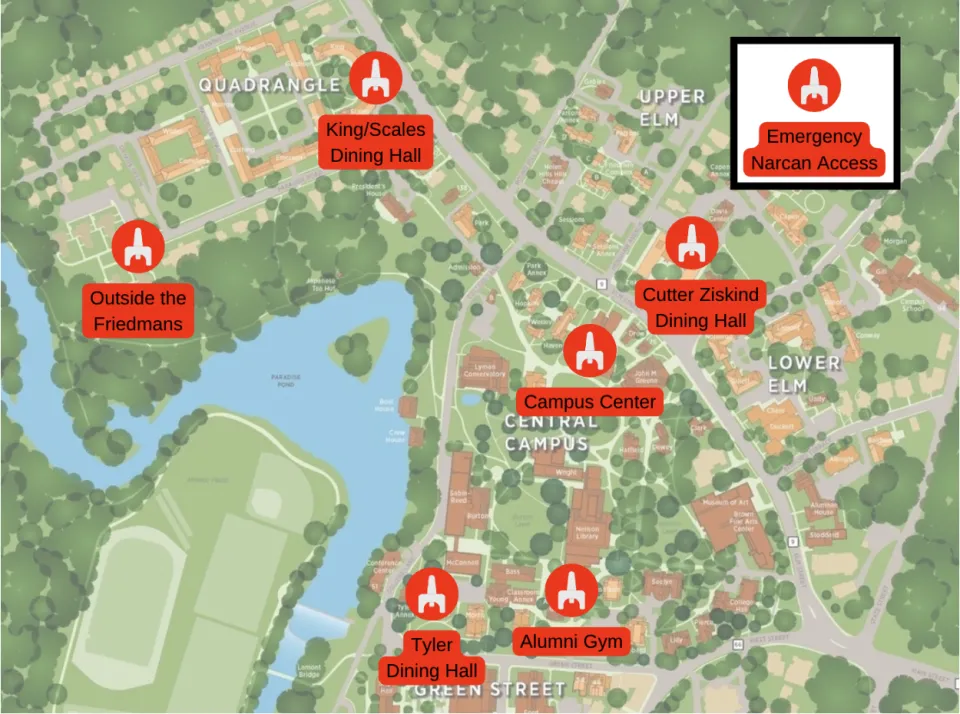Harm Reduction
Harm reduction comprises policies, programs, and practices that decrease risk of overdose for people who use drugs. Some examples of harm reduction for drugs include making Narcan accessible, educational programming, providing fentanyl test strips, and policies like Smith’s amnesty policy. It can also extend to interventions that decrease risk in other potentially harmful situations. Wearing a seatbelt, using barrier contraception, and using bug spray are all examples of harm reduction.
It is impossible to eliminate all high-risk behaviors. Harm Reduction aims at attenuating risk.
How to Respond to an Overdose
Narcan on Campus

These locations were chosen because of their proximity to student residences. Additionally, students are able to access the dining hall NaloxBoxes 24/7.
Using Narcan & Overdose Symptoms
Narcan is easy to administer. Watch this simple training, and instructions for use are on all NaloxBoxes.
Narcan has limited side effects if it is accidentally administered to someone who is not overdosing. However, ideally it should only be used when truly needed. Some of the signs and symptoms of an overdose include:
- Lack of consciousness
- Awake but with slurred speech or unable to talk
- Slow, shallow, erratic, or no breathing
- Skin is blue/purple/gray
- Fingernails or lips look bluish or gray
- Pulse is slow, erratic, or has stopped
- Choking sounds or gurgling noises
- Sweating and chills
- Body is very limp
- Seizures or convulsions